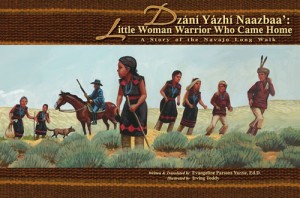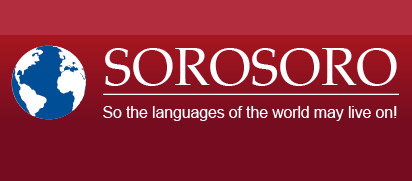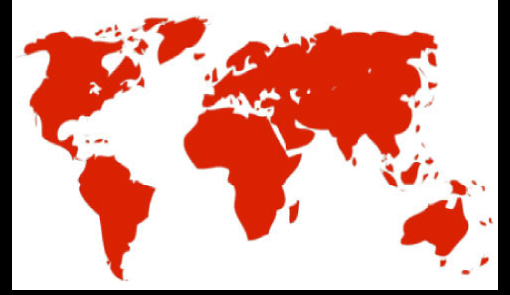Print  |
|


The revitalization of Navajo in the USA
Posted by Lucia Dumont on May 20, 2011
By Lucia Dumont, PhD in American civilization at the university of Cergy-Pontoise, research associate at the ‘Textes et Francophonie’ research center.

Cover of a bilingual book retracing an episode of the Long Walk by Evangeline Parsons Yazzie, professor of Navajo language and culture and coauthor of the first Navajo learning methodology, officially approved by the departments of education of Arizona and New Mexico.
The Navajo form a community of 269,202 souls, the majority of which, 180,762 souls, live in a reservation spreading across three states of the American Southwest, namely Arizona, New Mexico and Utah. The remoteness and poor access of this territory as large as Belgium protected the Navajo from outside influences for centuries.
The Navajo language belongs to the Athabaskan family. It is the most widely spoken indigenous language to USA in terms of the number of its speakers: 178,014, according to a 2000 census.
Causes of decline
Several major events have threatened the Navajo culture and language along the decades, starting with their deportation from their ancestral lands all the way to Bosque Redondo between 1863 and 1868, an episode known as the Long Walk.
On the economic level, the social pressure and extreme poverty suffered by the inhabitants have eased linguistic transfer towards English, « the language of bread ».
On a cultural level, the schooling of children in boarding schools far away from their family, where they were forbidden to speak their language, has been a traumatizing experience. The intrusion of a materialist lifestyle, as well as the pressure of certain organizations such as « English-Only », who advocate for an English-based monolingual society and describe Amerindian languages as an impediment to the integration of indigenous peoples within the majority society, have also largely contributed to the relinquishment of Navajo. As a result, a growing feeling of shame towards their own language drew parents to cease handing it down to their children.
At the end of the 60s, however, 92,8% of the population still spoke Navajo. Which is when awareness of the gradual decline of Navajo used as lingua franca began to emerge.
Successes of bilingual schooling
The first community school was open in 1967 by the Navajo, for the Navajo, with Navajo as language of instruction. Its mission was to instruct the children and parents first in their mother tongue with a gradual shift towards English to give them all the chances of thriving in both worlds.
The first higher education institution responsible for training future bilingual educators, the Navajo Community College, opened as soon as 1968. Then immersion schools were created in 1983 by volunteering educators and parents, in an environment that matches the children’s cultural identity. All courses are held in Navajo during the first year, then English is introduced gradually, and both languages are evenly shared by the end of elementary school.
Lastly, in 1984, the Navajo tribal council formally adopted a linguistic policy centered on bilingual education.
These schools encouraged the diligence of pupils, and statistics show that those who were instructed in their ancestral language end up with better results than the others, who followed courses exclusively in English. In some cases, these results are even ahead of Anglo-American children’s in the three fundamental subjects: reading, writing and arithmetic.
Navajo / English bilinguals are currently sought as certified interpreters by the courts of Arizona and New Mexico. They stand as the political, economic, intellectual and artistic elite of the Navajo Nation, as they’re easily able to make their way through both worlds.
Difficulties related to social issues
Despite all the efforts in motion and successes encountered, the number of Navajo speakers keeps dropping. And it is observed that the number of children who speak Navajo in kindergarten has been declining for 30 years: 80% in 1980, and today no more than 15%.
Different elements come into account, educational (lack of qualified teachers, high staff turnover), political/financial (dependency on federal funding), and demographic (elders passing away, and with them the language and traditions). But beyond these difficulties, the Navajos face a much broader problem: the most educated of the young generation leaving the reservation in absence of economic development.
And indeed, according to the 2000 census figures, 47,2% of the Navajo families on the US enclave live under the poverty threshold, an endemic form of poverty generating many acts of despair (addiction, violence, suicide). The unemployment rate ranges from 42,9% to 58% in certain areas and favors the migration of the younger generation towards the cities, where an increasing number of Navajo meet success in high rated universities!
The sense of pride in speaking Navajo, referred to as a language « victory » (it contributed to the US army overcoming a crucial battle in the Pacific, thanks in part to the famous Navajo Code Talkers), cultural events such as the celebration of language and that of culture, spelling contests, the election of miss Navajo, who must be bilingual, bicultural and educated… all of this contributes to the revival of some sense of ethnic pride. Though will the Navajo be able to restrain the predicted decline and ensure the resilience of the Navajo language in a society encouraging the exclusiveness of English?








